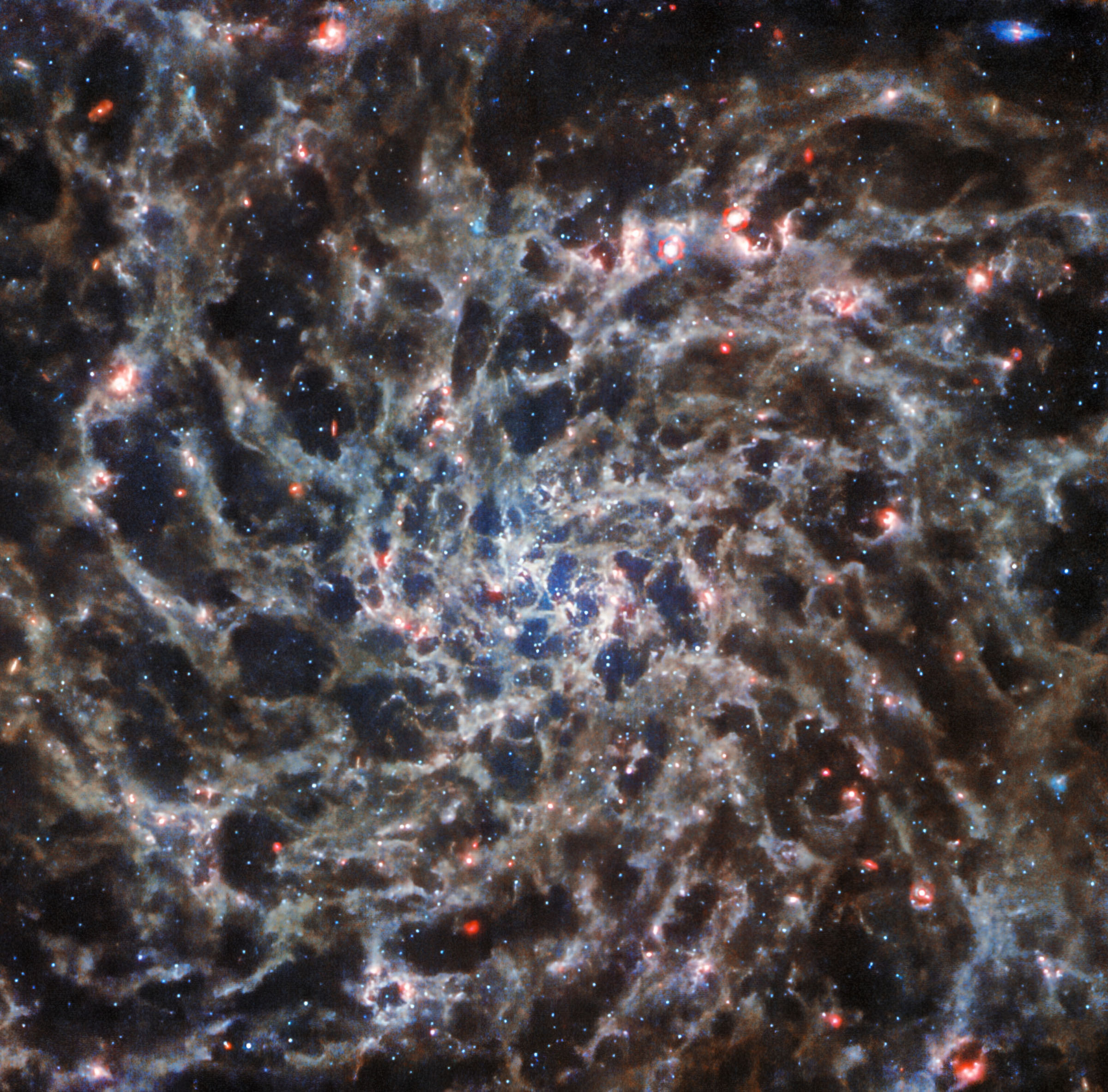The James Webb space telescope is one of the most powerful observatories that humankind has ever made. And with it, we’re able to get an unprecedented view of the early universe, as well as unparalleled looks at planets millions of light-years away. Now, the powerful telescope has given us unique insight into the backbones that make up galaxies with an image of a spiral galaxy’s skeleton.
Located 29 million light-years away from our own planet, the spiral galaxy IC 5332 has previously only been viewed as a wispy and dusty spiral-shaped galaxy. Now, though, with James Webb’s powerful Mid-Infrared Instrument, astronomers can look deeper at the skeleton that makes up the galaxy. It’s an intriguing view and one that could provide more information about how galaxies form the way they do.
This image of the galaxy’s skeleton is a stark reminder of how much detail James Webb can capture. Webb’s first images and images it captured of the Cartwheel Galaxy offer similar detail. But when Webb looks deeper into the galaxy’s skeleton, we can get an even deeper look at our universe.

As a whole, IC 5332 is around two-thirds the size of our Milky Way galaxy at just 66,000 light-years across. Previous captures of the galaxy have showcased the wispy tendrils we often see in spiral galaxies. However, those wispy tendrils vanish with James Webb, replaced with gaps throughout the galaxy itself. The new image of the galaxy’s skeleton also gives a view of the stars within it.
It’s a beautiful image that astronomers will no doubt be able to pull tons of data from over the coming months. It’s good to see the space telescope still working hard and delivering more for astronomers to study, despite issues with some of Webb’s instruments. We may not have had a breakthrough with James Webb’s data just yet, but there’s no doubt these observations will prove helpful.
You can see a comparison of Hubble’s previous captures of IC 5332 and Webb’s image of the galaxy’s skeleton in a report posted on the agency’s website. You can also see the breathtaking photo that James Webb took of the Pillars of Creation here.
Related coverage: See our ultimate guide to the James Webb telescope.







